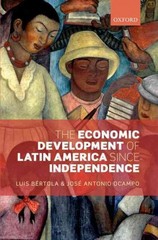Help me with my assignment..clear answers only!!
Problem 1. Consumption and Leisure with Quasi-linear utility. (70 points + 6 extra credit) Each day, Elisabetta has quasi-linear utility over leisure and consumption. In particular, she maximizes U(lew) = o(1) + c + (w). As we discussed in class, she can only spend her endowment M and wages earned wh, where A 0, o"(1) 0, she derives pleasure. 1. Derive Elisabetta's budget constraint. (4 points) 2. Write down the maximization problem of the worker with respect to c and I with all the relevant constraints. Assume that the budget constraint is satisfied with equality. (2 points) 3. Write down the Lagrangean and derive the first order conditions with respect to c, , and A. (4 points) 4. Simplify the problem to a system of two equations in two unknowns, c* and I* by solving for A*. This system defines the solution when the solution is interior. (4 points) 5. In this interior solution, how much does pride and shame (as captured by w(w)) matter? Provide economic intuition or mathematical intuition (or both!) for why you get this result. (6 points) 6. Assuming an interior solution, check the second order conditions for a maximum using the bordered Hessian. (5 points) 7. Still assuming an interior solution, use the implicit function theorem to compute (i) dl*/dw; (ii) di* /dM. (Suggestion: Use the uni-variate implicit function theorem) Also, compute directly de*/dM (you do not need the implicit function theorem here) For each of these comparative statics, provide interpretation (10 points) 8. Which of the responses in the previous point (7) are affected by the quasi-linearity assumption? That is, compare qualitatively to the responses to (7) you would have gotten if the utility function had been U(le:w) = look- + (w). [You should not need to solve the latter problem from scratch to answer this question] (7 points) 9. Going back to the system in point (4), characterize when a corner solution occurs, and what that solution is. (8 points for checking the case 1 2 0, extra credit of up to 6 more points for doing all corner solutions) 10. (Question with less guidance, worth 20 points) Now assume that the utility function instead is U(l, c; w) = o(1)(w) + c. All assumptions are as above, with the additional assumption that (w) > 0. In this case, the pride/shame term affect the marginal utility of leisure. Solve the maximization problem with this alternative utility function, and compare the interior solutions found here to the ones found above. How much does pride and shame (as captured by (w)) matter now? Compute dl* /dw now and compare to your answer in point (7) above. Provide interpretation. (20 points)Problem 2. Preferences. (30 points) Consider the following preferences defined on X = R as follows: a y if r 2 y or r 2 M. [Notice that the preferences here are over just one good, not two as we have often considered, that is, r and y are scalars. not vectors; to say this otherwise, think of r or y as number of apples] 1. (a) Provide an economic interpretation for this preference relation. In particular, how do you interpret M? (8 points) (b) Is this preference relation rational? Define and show formally if you can (6 points) (c) Find a utility function that represent these preferences, and show that it represents them. Is there only one such function? (10 points) (d) Is this preference relation (weakly) monotonic? Is it strongly monotonic? (6 points)








